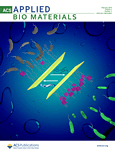
Journal of Biological Engineering
Scope & Guideline
Exploring the Intersection of Biology and Engineering
Introduction
Aims and Scopes
- Biomanufacturing and Biotechnology:
Research in this area focuses on the development and optimization of biological systems for the production of bio-based products, including pharmaceuticals, biofuels, and biomaterials. It encompasses metabolic engineering, synthetic biology, and the use of microorganisms for bioprocessing. - Tissue Engineering and Regenerative Medicine:
This scope covers the design and fabrication of biomaterials and scaffolds for tissue regeneration. It includes studies on stem cell differentiation, wound healing, and the engineering of organoids and tissues for transplantation. - Biosensors and Diagnostic Technologies:
Papers in this category explore the development of biosensors and diagnostic tools that utilize biological components for the detection of diseases and environmental monitoring. This includes advancements in nanomaterials and bioinformatics approaches. - Nanotechnology in Biological Applications:
This area investigates the use of nanomaterials and nanotechnology in biological systems, including drug delivery systems, imaging techniques, and the development of innovative therapeutic agents. - Bioinformatics and Computational Biology:
Research that employs computational methods to analyze biological data, model biological processes, and support experimental validation in biological engineering.
Trending and Emerging
- Sustainable and Green Biotechnology:
Increasing emphasis on sustainable practices in biomanufacturing, including the use of waste materials and bio-based feedstocks for production, is evident. This trend aligns with global sustainability goals and environmental considerations. - Smart Biomaterials and Responsive Systems:
Research focusing on smart, bioresponsive materials that can react to environmental stimuli (e.g., pH, temperature) for drug delivery and tissue engineering applications is on the rise, indicating a shift towards more dynamic and functional systems. - Machine Learning and AI in Biological Engineering:
The integration of artificial intelligence and machine learning in biological research for predictive modeling, data analysis, and optimization of biological processes is emerging as a significant trend, enhancing the efficiency and effectiveness of research outcomes. - Microbiome Research and Applications:
There is a growing focus on the characterization and utilization of microbiomes in various applications, including health diagnostics, agriculture, and environmental monitoring, reflecting the increasing recognition of microbial diversity's role in biological engineering. - Innovative Drug Delivery Systems:
Advancements in the design of novel drug delivery systems, particularly those utilizing nanotechnology and biomaterials for targeted and controlled release, are gaining traction, indicating a move towards more effective therapeutic strategies.
Declining or Waning
- Traditional Biomaterials:
Research focusing on conventional biomaterials such as poly(lactic acid) and poly(ethylene glycol) is becoming less prominent, as the field shifts towards more advanced materials and composites that offer enhanced properties and functionalities. - Basic Molecular Biology Techniques:
There has been a noticeable decrease in studies solely focused on standard molecular biology techniques, such as basic cloning and PCR. The trend is moving towards more integrated approaches that combine molecular techniques with engineering principles. - Animal Models in Biomedical Research:
While animal studies were once a staple in biological engineering research, the emphasis is waning as there is a growing push for in vitro models and organ-on-chip systems that can provide more relevant data with ethical considerations.
Similar Journals

Biotechnology Journal
Unveiling cutting-edge developments in molecular medicine.Biotechnology Journal, published by WILEY-V C H VERLAG GMBH, stands at the forefront of biotechnological research and innovation, recognized for its significant contributions to the fields of applied microbiology, molecular medicine, and broader biotechnology. With its ISSN 1860-6768 and E-ISSN 1860-7314, this journal has achieved impressive 2023 quartile rankings, positioning itself in Q1 for both Applied Microbiology and Biotechnology and Medicine (miscellaneous), and Q2 in Molecular Medicine, showcasing its impact and relevance within the scientific community. Based in Germany, the journal aims to disseminate high-quality research that drives advancements in biotechnological applications, fostering a platform for researchers, professionals, and students to engage with cutting-edge developments. With its ongoing commitment to excellence, the Biotechnology Journal is an essential resource for those seeking to stay informed about the latest trends and innovations in biotechnology.

Bioactive Materials
Fostering Collaboration in Cutting-edge Biomedicine ResearchBioactive Materials, published by KEAI PUBLISHING LTD, stands as a leading Open Access journal in the fields of Biomaterials, Biomedical Engineering, and Biotechnology. Since its inception in 2016, this journal has rapidly ascended in prominence, currently holding a prestigious Q1 category ranking across multiple disciplines, reflecting its significant impact within the scientific community. With its E-ISSN 2452-199X, it spans a broad spectrum of research areas, contributing valuable insights to the ongoing discourse in bioactive materials and their applications. The journal's superior Scopus rankings further illustrate its influence, boasting impressive standings in engaging niches such as engineering and molecular biology. Bioactive Materials offers a vital platform for researchers, professionals, and students to disseminate and acquire cutting-edge knowledge, thus fostering innovation and collaboration in the rapidly evolving terrain of biomedicine. Its commitment to Open Access since 2016 enhances accessibility, ensuring that the burgeoning advancements in this field reach a global audience.

ACS Applied Bio Materials
Innovating the Future of Bioengineering and Materials ScienceACS Applied Bio Materials is a leading academic journal published by the American Chemical Society, focusing on the innovative intersection of bioengineering and materials science. Since its inception in 2018, the journal has established itself as a pivotal platform for disseminating impactful research within the fields of Biochemistry, Biomaterials, Biomedical Engineering, and Chemistry, often ranked in the top tiers of these categories. With an impressive impact factor, it holds a Q2 ranking in both Biochemistry and Biomaterials, and a prestigious Q1 ranking in Biomedical Engineering and miscellaneous Chemistry, underscoring its significance in advancing knowledge and practices across these disciplines. The journal’s editorial commitment to high-quality, peer-reviewed research ensures relevance and rigor, appealing to a diverse audience of researchers, professionals, and students keen to explore breakthroughs in bio-related materials technology. The access options enhance its visibility and reach, allowing for a broader dissemination of studies that drive innovation and collaboration in biotechnology and material sciences. Located in the heart of Washington, DC, ACS Applied Bio Materials serves as a crucial resource for advancing the future of healthcare, engineering, and materials research.

Current Opinion in Biomedical Engineering
Fostering collaboration in cutting-edge bioengineering.Current Opinion in Biomedical Engineering is a renowned journal published by Elsevier, focusing on the cutting-edge developments and critical assessments in the fields of biomedical engineering and related disciplines. With an ISSN of 2468-4511, it provides a valuable platform for researchers and professionals to disseminate their insights and discoveries in areas such as bioengineering, biomaterials, and medicine. Its impressive impact factor positions it in the Q2 category for several fields, including Bioengineering and Biomedical Engineering, highlighting its influence and relevance in ongoing scientific dialogues. The journal’s unique format of opinion pieces and reviews encourages innovative thinking and fosters collaboration among experts. As an essential resource for those engaged in the life sciences and engineering, Current Opinion in Biomedical Engineering serves to stimulate discussion, promote knowledge exchange, and drive advancements in biomedical applications. Set in the Netherlands at Radarweg 29, 1043 NX Amsterdam, the journal is accessible through various academic platforms, enabling a global readership to engage with the latest scholarly work in this dynamic field.

Acta Biomaterialia
Pioneering Research for a Healthier TomorrowActa Biomaterialia, published by Elsevier Science Ltd, is a leading journal in the fields of biochemistry, biomaterials, biomedical engineering, biotechnology, and molecular biology. With an ISSN of 1742-7061 and an E-ISSN of 1878-7568, this prestigious journal has secured a remarkable position in the academic community, evidenced by its inclusion in the Q1 category across multiple disciplines for 2023. It ranks impressively at #21 in biochemistry, #16 in biomedical engineering, #18 in biotechnology, and #11 in biomaterials, reflecting its high impact and relevance to ongoing research and development. The journal provides a platform for disseminating innovative research and advancements in the design and application of biomaterials, contributing to scientific discussions that propel the field forward. Although it does not currently offer open access options, Acta Biomaterialia continues to attract contributions that advance our understanding of biomaterials and their interactions with biological systems, ensuring that researchers, professionals, and students remain informed about the latest trends and breakthroughs in this rapidly evolving area of study.

CELL AND TISSUE BANKING
Connecting research and practice in cell and tissue banking.CELL AND TISSUE BANKING, published by Springer, is a prominent journal dedicated to advancing the fields of biomaterials, biomedical engineering, cell biology, and transplantation. With its ISSN 1389-9333 and E-ISSN 1573-6814, the journal plays a crucial role in disseminating high-quality research from its inception in 2000 to its ongoing contributions through 2024. Situated in the Netherlands, it boasts a respectable 2023 impact factor with notable quartile rankings, positioning it within the Q3 category for biomaterials, biomedical engineering, and transplantation, and Q4 for cell biology. Furthermore, its Scopus rankings underscore its relevance and influence, particularly in the fields of medicine and engineering. Although it does not currently offer open access options, the journal remains a vital resource for researchers, professionals, and students alike, fostering innovation and knowledge transfer in the critical areas of cell and tissue sustainability.

Cellular and Molecular Bioengineering
Bridging Disciplines for Groundbreaking Scientific DiscoveryCellular and Molecular Bioengineering, published by SPRINGER, is a prominent journal dedicated to the exploration of interdisciplinary approaches in the fields of biochemistry, genetics, and molecular biology. With an ISSN of 1865-5025 and an E-ISSN of 1865-5033, this journal has been a pivotal resource since its inception in 2009, showcasing groundbreaking research that combines innovative modeling and simulation techniques with cellular and molecular applications. As a Q2 journal in both Biochemistry, Genetics and Molecular Biology (miscellaneous) and Modeling and Simulation categories, it ranks favorably in the Scopus metrics, placing 62nd out of 324 in Mathematics_ Modeling and Simulation, and 69th out of 221 in General Biochemistry, Genetics and Molecular Biology. The journal's commitment to quality research and its contribution to advancing academic dialogue make it essential for researchers, professionals, and students seeking to stay at the forefront of bioengineering innovation. While it currently does not offer open access, it continues to provide significant insights and empirical studies that can help shape future developments in the field, reinforcing its role as a key player in cellular and molecular bioengineering.

Frontiers in Bioengineering and Biotechnology
Advancing Knowledge for Healthier Lives and a Greener PlanetFrontiers in Bioengineering and Biotechnology, published by FRONTIERS MEDIA SA in Switzerland, stands as a leading platform for innovative research and developments in the fields of bioengineering and biotechnology. Since its inception in 2013, this Open Access journal has garnered significant recognition, reflected in its impressive category rankings: Q1 in Biomedical Engineering and Q2 in Bioengineering, Biotechnology, and Histology for 2023. With a focus on fostering collaboration and knowledge sharing, it aims to provide researchers, professionals, and students with access to pioneering studies that push the boundaries of science and technology. The journal, which is indexed in prominent databases, boasts high visibility and impact, evidenced by its impressive rankings across various categories in Scopus. As it continues to converge from 2013 to 2024, Frontiers in Bioengineering and Biotechnology is dedicated to shaping the discourse in its field and promoting advancements that have the potential to transform healthcare and environmental sustainability.

BIOCELL
Unveiling the Secrets of Cellular InnovationBIOCELL is a distinguished peer-reviewed journal dedicated to the field of Cell Biology, published by TECH SCIENCE PRESS. Since its inception in 1995, the journal has been at the forefront of disseminating innovative research, with converged publication years extending from 1995 to 2013 and from 2015 to 2024. Although it currently holds a Q4 ranking in the Cell Biology category according to the 2023 category quartiles, BIOCELL aims to foster advancements by providing a platform for researchers, professionals, and students to share their findings in biochemistry, genetics, and molecular biology. The journal is available in both print (ISSN: 0327-9545) and digital formats (E-ISSN: 1667-5746) and seeks to attract contributions that enhance scholarly dialogue and understandings of cellular mechanisms and innovations. With a commitment to quality research and critical discourse, BIOCELL plays an important role in nurturing the scientific community within Argentina and beyond, offering vital insights that contribute to the advancement of the life sciences.

FOLIA HISTOCHEMICA ET CYTOBIOLOGICA
Exploring the Depths of Cellular Structures and FunctionsFOLIA HISTOCHEMICA ET CYTOBIOLOGICA, an esteemed journal published by VIA MEDICA, serves as a vital platform for researchers and professionals in the fields of histology, pathology, and cytobiology. With an ISSN of 0239-8508 and E-ISSN of 1897-5631, this Open Access journal has been disseminating significant findings since 1984, offering free access to a broad audience of scientists and academics. Based in Poland, this journal focuses on critical advancements in the study of cellular structures and functions, contributing substantially to the understanding of various diseases and biological processes. The journal currently holds a respectable impact factor, ranking in the Q3 category for Histology and miscellaneous Medicine, and Q2 for Pathology and Forensic Medicine as per the 2023 metrics. With its commitment to quality research and an inclusive publishing approach, FOLIA HISTOCHEMICA ET CYTOBIOLOGICA is poised to continue influencing its fields significantly through 2024 and beyond.